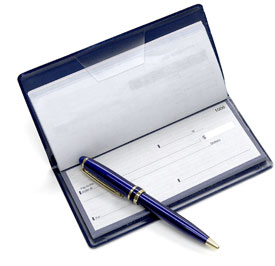
Introduction
Chapter 1: Checking Account Fundamentals A checking account is a service provided by financial institutions that allows you to deposit money with them and withdraw it at a later date. Checking accounts typically come with a low or no interest rate, but you can access your money almost anywhere, and there is usually no limit to how many withdrawals you can make in a month. In contrast, savings accounts and certificates of deposit (CDs) come with a higher interest rate but restrict or penalize withdrawals. Most people use a checking account for day to day money management, such as paying for groceries and clothing, and a savings account and/or certificate of deposit for saving. You may be wondering if having a checking account is truly safe. Some people avoid opening one because they fear that they will lose all of their money if their financial institution goes out of business. Instead, they use check-cashing stores and carry around large amounts of cash. This is not a good idea. Check-cashing places charge exorbitant fees, much higher than the fees charged by traditional financial institutions (if they charge any at all). Furthermore, while you can cancel a lost or stolen debit card or check, if you lose cash or are robbed, the money is gone forever. The safest place to keep your money is in a financial institution – banks and credit unions are insured, so within limits, even if your financial institution were to go out of business, you would not lose your money. Types of accounts
Opening a checking account Getting a checking account is an easy process for most people. However, if you have a ChexSystems report, it could be a challenge. ChexSystems collects information on negative checking and savings account activity and provides the information to financial institutions. Negative activity includes writing fraudulent checks or committing other acts of fraud, bouncing checks, and overdrawing your account. There is no standard for reporting to ChexSystems – some financial institutions will report a check that bounced due to a miscalculation, where others may only report cases of fraud. If you have a ChexSystems report, you can get a free copy of it once a year by visiting www.consumerdebit.com or calling (800) 428-9623. Some financial institutions also check your credit report when you apply for a checking account. Unlike with ChexSystems, your credit report monitors both positive and negative credit activity. Having a history of late payments or a bankruptcy, judgment, repossession, or foreclosure on your credit report can make it difficult to get a checking account. You can get a free copy of your credit report from all three credit bureaus yearly through the Annual Credit Report Request Service www.annualcreditreport.com or (877) 322-8228). Are you doomed to keeping your money in a shoebox if you have a ChexSystems report or negative information in your credit report? Not necessarily. If you are initially denied, talk to your financial institution about what you can do. If you have an outstanding debt, you may be able to get a checking account if you pay it. Your financial institution may also be willing to let you open an account if you complete a course on checking account management. |
|
| Copyright © 2010 CCCS OF SAN FRANCISCO | |
 Whether you have a history of overdraft or non-sufficient funds charges or you just want to know how to best manage your first checking account, this module will give you the tools and information needed to become and remain a successful checking account holder. You will learn key components of wise checking account management, including:
Whether you have a history of overdraft or non-sufficient funds charges or you just want to know how to best manage your first checking account, this module will give you the tools and information needed to become and remain a successful checking account holder. You will learn key components of wise checking account management, including: